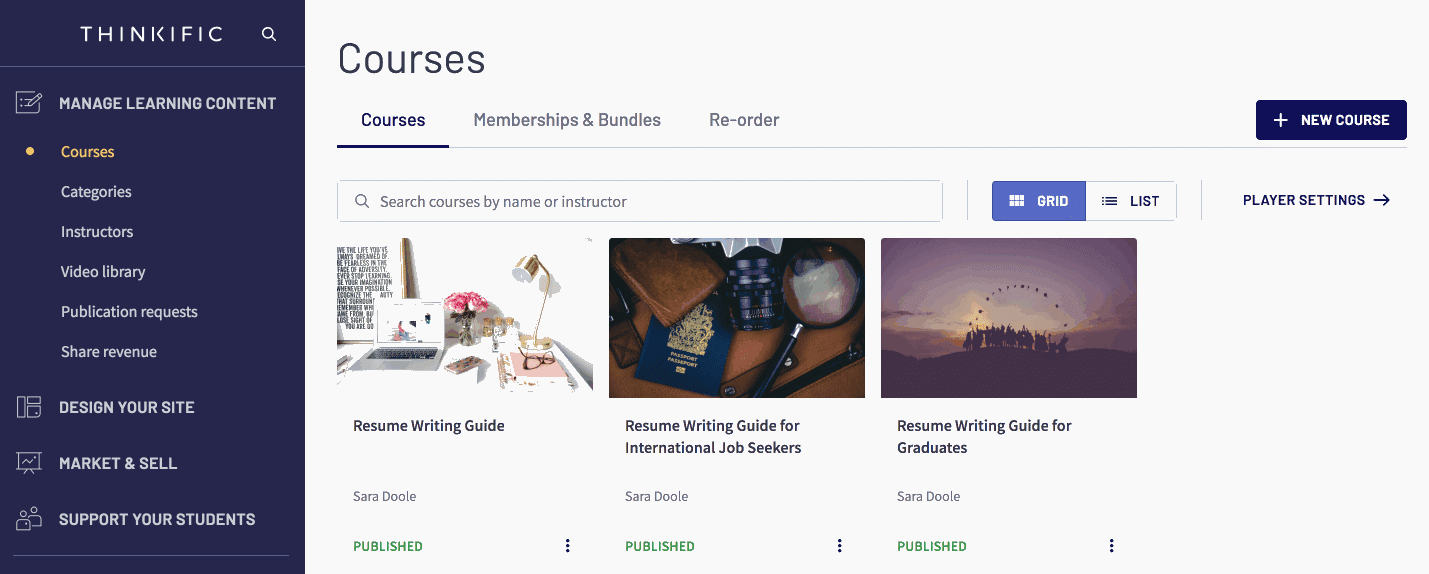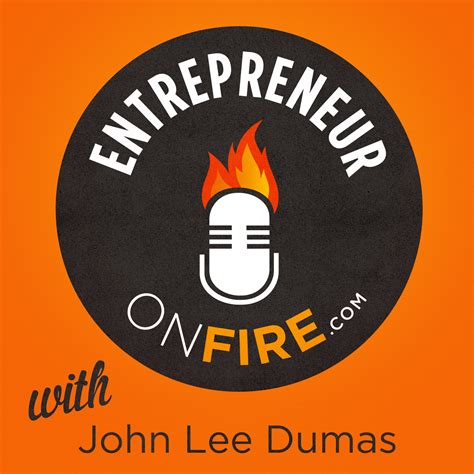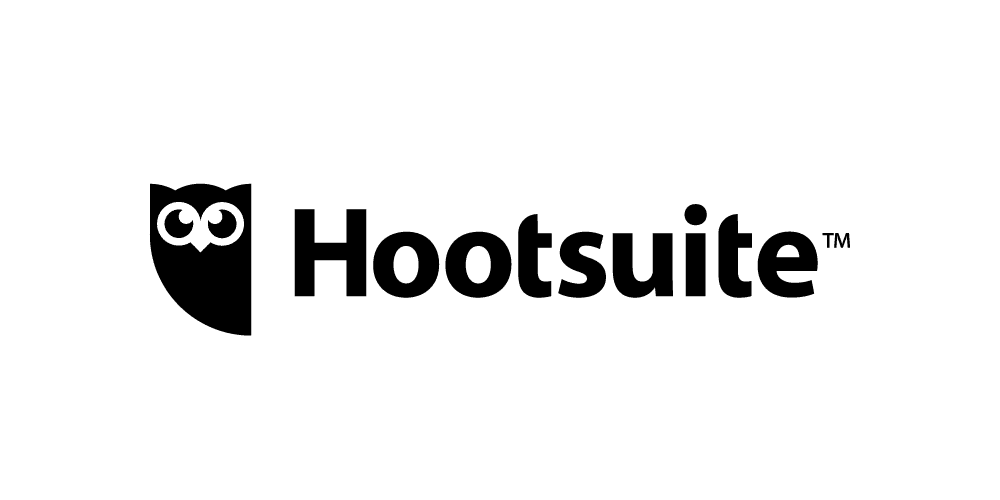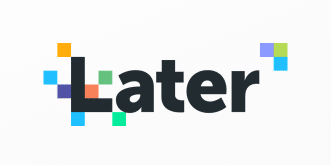
Creating, marketing and selling Online Courses Has Never Been Easier
Watch these videos to learn more about Thinkific and meet the people behind it.
Thinkific Demo Only
Thinkific Live Product Showcase + Demo

Steve Dotto here, how the heck you doing this fine day and welcome to our product showcase where this week we are featuring think ethic, which is the learning management tool that we use here at Datto tech. The goal of the product showcase is to introduce you to great products and allow you to meet the people behind them and what is following is a demonstration of Thinkific and a quick interview with the founder Greg Smith. Now you can also join us live almost every week for the product showcase live where you can have a live Q and a with the team from whichever product we are featuring. A that video is linked to the replay of that video is linked in the description below as is a link to a landing page which gives you a special offer if you decide that you want to try out Thinkific a bonus for Datto tech community members. So now sit back, relax and enjoy our exploration of Thinkific on this week's product showcase. Yeah.
right. Let's get into Thinkific. A big part of our business here at Datto tech, we host all of our online courses. At Thinkific, we have four, I guess it's a little bit over three years now. We've been using it. And so we've got a lot of, a lot of time and energy invested in Thinkific, both from a revenue side and also from a list building and community side. Uh, we use think if we can a variety of different ways. So let's just boil back to the basics. Thinkific is an LMS, a learning management system or learning management software that allows us to host digital courses. It gives us the environment that we need to create the digital content that we deliver for an online course and then administer and manage the delivery of that content to the students. Uh, so it's fairly sophisticated in that, in that aspect.
Um, but what's unique is the fact that you can set up your first online courses for free. Most of the access to most of the different features and tools are available for you to test out for free to learn the direction you're going in, to going to get your feet wet. Because let's be honest, setting up an online course is a bit of a long journey. It takes time. I mean, you've got your entire, the all of the, uh, the faculty you have to have as far as creating your content and understanding the message and then the challenges created with the content side of the course. Then you've got the marketing side of the course where you actually have to get people to sign up and take the course and make sure that you actually have students in the seats. And then you've got the administration of the course, the, the, uh, the managing the entire process.
Uh, so there's three fairly large learning curves that we all have to go through. Now, fortunately, Thinkific assists us in each one of those aspects. Let's dive in and take a look. I'm just going to take you on a quick tour of kind of the top, uh, things that happen at Thinkific. And from there we can go on. I've got, uh, most of my content is at Datto tech. You, that's what I called my a. That's what I called my Thinkific account. So think of Thinkific as a, it's a, um, it's a online service, a software service, uh, but all of your courses are contained within, it's like a website, having your own website or having your own community, uh, that you can manage all of your content in, but you can host multiple courses. So we set up a master account, uh, which I, in my case, I called Datto tech U and into that I deliver a variety of different courses.
And in each of those courses, of course, we have different modules within the course. So it's a multilayered system. This is the dashboard, the main dashboard, which once you've set up a, you will go into, and I've got wobbled 15,000 students now taking different content, taking different courses within the gimmick, which if just stop and think about it, it's pretty freaking awesome. Uh, that many people that are learning things that are enriching their lives, some of them are also enriching us. So I appreciate that. Down the left hand side. Once you've got your Thinkific modules, your Thinkific account set up, you've got access to your main areas, managing your learning content, designing your site, marketing and selling your site and supporting your students and each one of these are important for you to get a grasp of. Let's start though just with the learning content, your courses themselves and here is a list of all of the courses that I've created within Thinkific and if we go into any one of these courses and let's take one that is quite popular for me, it's a, it's a quick start guide.
It's called my Evernote quick start guide. When I take a look here, I can see all of the main structure of the course itself. Now this course is not a course that we've been selling, but it is what we call a list builder. It is a course that we created to introduce people to a how to use Evernote, but also to introduce them to Datto tech and to get them to sign up for our newsletter to take more of our courses and ultimately possibly to buy something for us. Now let's go into the course content itself. So you can see the main structure, cause this is where most people are going to be most. This is where you spend most of your time at the beginning, at least within Thinkific, is actual content creation. So what we see here is we see an HTML interface. It's like you're working on a webpage because that's exactly what you're doing is you're building web pages that contain your course content.
Now for most of us, most of that content is going to be videos. So when you create and record a video, you can either upload it to think if it can, they will host it for you. Or you can store the videos on your own service and then use embedded codes to put the content into your course. Now we can add different modules to our courses using this tool. On the left hand side here you see we add lessons and those are modules which can be video quizzes, multimedia text, uh, surveys, PDFs to upload a audio content, uh, downloading content, presentations, exams or assignments. So you've got all of those different formats that you can create your course with. Another kind of key thing to understand is, this is kind of stepping over to the marketing space away from the course content creation space for just a moment, but when you create any module, you can make it a free preview lesson.
What's a preview lesson? It's a great technique you can use if you're selling an online course to allow people to take the first module or first two modules of the course or lessons of the course, I call them modules, but the first two lessons of the course for free before they pay to take the rest of the content so that it's kind of a test drive that people can do, which is a great sales tool. If you're confident in your content, you can also make it a prerequisite as they have to kind of complete this content before they get the next piece of content. You start to get the picture of the organizational structure. Now as far as the content structure itself goes here, we've got a basic formatting of a webpage where where you create different, you know, you add graphics, you do formatting of text and you create the structure of your online course and you can see this one here is a quick start guide. So I've got all of the different action points that key takeaways and then the videos all laid out. Now this is what it looks like to me as a content creator. As I'm editing it, I can go in and edit any of these points. We can also at any point in preview what the course is going to look like by going and taking a look at what the students sees of the course as they go through it. And this is what the course looks like to students as they go through
my Evernote quick start guide. A lot of people fail in using Evernote because they try it and [inaudible].
There we go. So this course has done exceptionally well for us. We've got dozens of five star reviews for it and it's introduced many, many people to the Datto tech community. In fact, some of you out there now might've first discovered us because we promote this quick start guide quite heavily. So that gives you an idea of the, some of the type of content that you can create within Thinkific. Let me just go back for a moment and let's imagine that we're creating a brand new course and let's just go in and let's see what happens when you start a course from scratch. When you create a new course. This is one of the things that I really appreciate about Thinkific is they create a lot of structure. They give us the ability to, to take the content that we know into, apply it into a format cause we often hit kind of writer's block or course creators block, not knowing exactly how to proceed, but Thinkific has done a tremendous amount of research in order to help us understand the, uh, the structure that courses should have.
And we can see here that even at the beginning, right from the very beginning, is this going to be a mini course? Is this going to be a presale course, a flagship course? In other words, in other words, a big meaty course that has all of the functionality built into it. Is it just going to be a simple digital download or a reference library? Or is there a webinar replay, which we do a lot of here at Datto tech. So this gives you the basic structure before you start. So let's say it's going to be a webinar replay. We choose it, I'm going to call it webinar replay.
And we are off to the races. We create the course and it now gives us a template. It says, okay, how to use this code, which was nice in the, and they, they've spent a lot of time. It's kind of meta, isn't it, that they've spent a lot of time in their course creation software, teaching us how to create courses. Uh, that's the way it is. But here we see it. So if you walk through this process, you can be sure that you're hitting all of the major touch points in creating your online course. Um, and that's just this sophistication that they've done to the course creation module. And this functionality extends through to tools to help us learn about the marketing of the course and to learn about the administration or to manage the administration of the course. Now, Thinkific was created, uh, it came out of the imagination of a, of a, now I someone I consider my friend Greg Smith who is a lawyer here in Vancouver, his, his background is as a lawyer. Don't judge him harshly, uh, but as a lawyer, and I can still remember I was introduced to it. I had lunch. Greg invited me to meet with him and we had lunch one day and he filled me in on his course creation tool. And I gotta admit I was a little bit skeptical about the potential of a new online course tool, but Greg was passionate about it.
It was initially solving my own problem and then very, very quickly solving the problem of a whole bunch of people reaching out to me. And I think we actually got lucky and met a lot of software companies start out building a solution and then trying to find people who have the problem. We started out where I got really to a point where I'm like, okay, that's like the 20th call I've received from someone saying, can you build this for me? And we just decided we build it. So cause I had my own online course, right? I was teaching that online ALSAC course. I had asked my brother to build a solution for me so that I could have my own site, my own brand, my own course, my own data, my own customers, my own revenue, and really build a brand and a business around what I wanted to teach.
And uh, so he built that for me. And the initial version was, was terrible. It was really difficult to use and stuff, but it didn't matter cause the student side was great. The back end for me was a disaster. Uh, but I was willing to put up with it, but then people started calling and saying, how'd you do it? I want to do something just like what you did. Can you create something like that for us and to meet that exact need of your site, your brand, your course, your data, your customers, your revenue, they're really, there is LMSs out there, but there wasn't a solution that met this need of really being e-commerce and business meets education. Forgive
me, I just wanted to jump in with a quick note that in the description below you'll find links to a landing page which has a special offer that Thinkific is offering to the Datto tech community. So if you want to try out Thinkific and take advantage of a generous offer that they're offering to us, I encourage you to click on the link below. Additionally, if you want to join us any for the live product showcase, make sure that you're subscribed to this channel and that you have clicked the notification bell when we go live. You will then be notified that we are indeed live and you can jump in and ask questions of the great people behind the products that we showcase each week. Now, back to your regularly scheduled programming. That philosophy of how Thinkific was created is core to a really understanding Thinkific. Once you start using it, you'll, you'll quickly determine the flexibility and discover new opportunities about how you can apply it in your life.
I mean, typically speaking, when we start looking at an LMS, we're thinking about a course. We're thinking about a simple structured course where we're going to teach something either for free or sell it. We've got an employee orientation, we're teaching them about a product, we're teaching them about a service. We're teaching a skill. All of those things of course are right in the sweet spot of what Thinkific does, but after you use it for a little while, you will suddenly be sparked with imagination of new ways to use it. For example, when we were using it, we quickly realized that it could replace membership software on our website, so you know, to have people register and become a member of the Datto tech community, we could use Thinkific as a base for that community instead of using a different WordPress membership site based service, which allows us to control communication with the community and our delivery of content far more effectively as far as we're concerned.
Oh, opening our eyes and taking the platform we've built and really surprised us in a couple of ways. I mean, there was one on the content side and then there's another on just what they've been able to do with it and one of the really cool things is rather than some of the other software tools out there, we've taken this approach of being an open platform, meaning that you can take what we've built, which we want to make. We make that something easy to use meets all of your needs. But if you, if you want to build on top of it, add to it, customize it, change completely the way it looks and feels you can do that. And so where I get most surprised is when I see people and they'll hook up with one of our partners and they'll do a whole bunch of customization to it and it comes back completely unrecognizable.
Like I will look at a site or I'll be taking a course and I'm like, this, this isn't thinking if it gets it. And, uh, and I find, I look behind this, you know, I figured out that it is, um, and I'm just blown away by how far people will take it and how much you can actually customize it. It's, and the other is, I've constantly been blown away on the content side of what works, hula hooping. There's a, there's a lady in, in Australia who's built an empire around teaching people to hula hoop or, uh, making custom jewelry in your work shed. Then you've got the more serious topics. Like there's, there's actually a guy here in Vancouver who's done it doing exceptionally well, built a whole team. I think he's got 20 or 30 employees and he just teaches people corporate finance. It's amazing the breadth of topics.
I wonder how many people watching this video right now have thought about doing an online course and not started or taking the first steps into creating online course but not completed it for any reason. And I asked Greg if you could think of what the common bumps in the road were that stop content creators from completing their course.
It's, I liked the way you said it, sort of like bumps in the road are we look at it as this journey. So the first one I see is, is a mindset issue really around, you know, failure to start or I'll, I'm not ready. I don't have time. I'll do it one day. And I think this is typical of anyone in business. We all kinda hit this mindset roadblock at points. It can come back to perfectionism or motivation. Best way I've found to combat that is actually what my brother told me when we first got started is I wanted to make this beautiful 180 hour course and he said, you got 30 days. I'm lodging, whatever you've built in 30 days.
This is such good advice that it's easy to give to others, but hard to do ourselves. The concept of done is better than perfect. Remember when you launch a course, when you deliver content to the community, you can change that content. You can edit it. This is an iterative process. It's not locked in stone once you deliver a course, so you have the ability to get feedback from the community and then improve the quality of the course as you go along.
So rather than me spending a year producing something, people were going to get feedback on anyway, I got something out, I got the feedback, and then I was able to iterate and improve. Plus, I now had the motivation that I knew students liked it. They were learning from it, they were getting value and I was generating revenue so that all the motivation I needed was there. Yeah, if you're not a little embarrassed by what you're shipping, you've probably waited too long to ship it. And actually to that note, so we've built a few features recently that help people get over this. So one is, um, just the prelaunch page. So you can, you can in a few minutes, set up a prelaunch page automatically and then drop it. And really you're just, you know, you're sharing it on Facebook or Instagram and saying, I'm thinking about doing this course or this course is coming.
Sign up here if you're interested. And that helps you build that early motivation and interest around your course before you've even invested the effort of building it. So it's a great way to kind of get over that early hump. Sometimes people get intimidated by technology or setting everything up. And so that's really where we've dug in and tried as we try and solve all of these roadblocks, either through education or support or assistance, uh, or technology. The tech one is one where we've really tried to dive in and make our platform easy to use, easy to get started. Uh, but it'll scale with you. So as you grow, we actually find people will graduate from other platforms to us because they're looking to take their course further. Uh, but really just trying to make it super easy. And then on top of that, we have the whole support team here. So when people get stuck, we're here to help them out if they're not as comfortable with, you know, getting their course set up and running and launched. Um, so we do things like a prelaunch review where you say, okay, we're think we're ready to go and we'll look through it and help you out and make sure you're all ready to launch
that investment in helping creators get over different roadblocks into structure their course and have a smooth content creation process is invaluable. I have to tell you as a course content creator, just, you know, then the confidence of when I start a new course known, knowing that the template that I'm creating is going to work with the ultimate goal of my course. Choosing whether it's going to be a flagship course or a mini course right at the beginning. And then once I've created the course and started work on it, the feedback that they give you at each stage that sparks your imagination. How do you use the different templates, uh, giving you notes of best practices even when you just go to add a new chapter, a new lesson to your course, uh, seeing the different types of media that you have available. All of that feedback helps move and keep the ball moving. Sparks imagination and helps me personally overcome any course creators block that might occur.
Yeah, and that's that. It's, it's exactly that. We have these templates. So if you're doing a mini course or you can pick what kind of course are you going to do a mini course or you're doing your big flagship course, are you doing something that's going to be drip released over time? And then you click that template and we kind of auto fill it for you and then tell you what to plug into each space. So it gives you kind of a blueprint basically to go and build your course
more time you spend with any product. The more you kind of understand the real key benefits that that product have for you. So I asked Greg, who should probably know better than anyone else, what are the real gems that people aren't using enough within Thinkific? What are the features within Thinkific that they, that he wishes more content creators understood the value of
groups and coupons and how those work with our link generator. So you can generate a link to a course, a attic coupon onto it potentially and add a group onto it. And so you can send this out. And then when people sign up to the course through that, they're automatically getting whatever discount you wanted to offer if you want it to offer it.
Greg took us now from the course content side into the marketing side of Thinkific, which we should have spent more time on frankly already up to this point. But if we go here in our dashboard into the market and sales side of Thinkific, we get a feel for all of the different tools that Greg is talking about. Starting with coupons where you can create discount coupons and discount codes for people to register for courses. And then they've got a whole series of these sales widgets which allow you to create a embed codes to create a sales a embeds in for, for different websites. So you can create either links that include all of the different discounts that Greg is talking about, but you can also, let me just see here, turn on the product image. You can also set up these kinds of nice little banner ads that you can import into email or into websites, uh, so that you can market your cars more effectively.
While we're on this topic looking at the marketing and sales side, uh, he talked a little bit about emailing and communicating with your community. There's a whole variety of integrations built within Thinkific as well, which are tremendously important from things like Stripe, for managed Stripe and PayPal for accepting payments all the way through to, in our case we use infusion soft so that Thinkific integrates with our CRM. So we know what customers are purchasing from us and we have a lot more control over messaging and communicating with them. And sometimes we use Infusionsoft for that. But there's also the ability to email right within Thinkific to our students should we choose to,
this is actually probably the most underused, underutilized area of the app is if you go into the users table and you look at the uh, advanced filters and bookmarks, you can filter by, uh, dozens of variables and then you can combine them in all sorts of different ways. So you could look at, uh, I want to see everybody who signed up over the last month but has not purchased or everybody who signed up more than a month ago. And hasn't logged in within the last two weeks.
Two last things that I wanted to cover with Greg and first is he gets to look at so many content creators. I was wondering what is the common um, kind of attitude that course creators have who are successful
because it's the people who are willing to charge ahead and they're okay with making some mistakes. I mean, you must see this in all of the technology you've taught. There's a mindset of, well, I'll just, I'll just click on things until I figure out how it works and get it figured out. I'll just build something and get it out there. I'll just use it and I'm not so worried if I fail. That's your attitude of I can figure this out. I'll just play with it. It's that attitude of like I can just figure it out and it's less so about the technology these days cause that's getting easier and easier. Although that's part of it. It's also I think about, I'll just figure out how to market it or I'll just try some stuff and put it on Facebook and see if that works. And learn from it. I'll just start shooting a video and, uh, figure out, okay, the lighting was off, but I'll try again.
My last question is always is about the culture of the company. What is Thinkific like as a company? Now, I'm fortunate living in Vancouver where Thinkific is based. I've gotten to know many of the people who work with Greg at Thinkific and we've got a great relationship, but I wanted him to tell us about the corporate culture.
And so one of those things that we're very big on is inclusivity, equality. Um, one of our core values that's up on our walls here, everywhere. It's got stickers on my laptop around this inclusivity and equality. And we really, you know, you can say it, but we really live it. In fact, over half of our team is women. Over half of our leadership team is women. Uh, we've got, we represent cultures from around the world, religions from around the world, uh, you know, all different sexualities. Uh, it's, it's really a very inclusive, open culture. So that, that's one piece. And I think that even goes to, you know, the openness of all the people around the world that we work with. Um, and one thing we about our core values, if it's not something we're willing to give up revenue, sacrifice revenue or you know, have it cost us something, then it's not really a core value.
So we're really big on ethics and integrity and there's certain been many occasions over the years where we could have take one taken one route that would have been a little less ethical but made us more money or the other route that was the ethical path to take. Uh, and we've always gone down that the ethical path even at, at cost to ourselves. Uh, we're really big on celebrating successes, whether that's, you know, internally as a team or with our clients or celebrating the success of our clients. And I'd say one of the biggest things is we're super driven to client success. And that's where it starts to start to lead out of Thinkific and into the culture around us. And the people we work with is the reason. We've always had a very large support team, often larger than we've needed to meet. The core demands, often more expensive than we've needed a and why everyone in our company kind of participates in talking to customers and support is we care so much about the success of our customers. And so in not just in how we support people, but the product we build, everything we build is really focused around, uh, the success of our customers. So even if you walk into the office and you see our goals for the year up on the wall, two of the top goals are around customer success and how can we make our customers more successful. And that goes into every feature we build being about how we make you more successful.
And I can't think of a better point to wrap things up on a great big thanks to Greg and his entire team at Thinkific for supporting us so well on the product showcase. Now if you want to participate live and why wouldn't you? Would not pportunity to ask live questions of the teams that create the products that we showcase. Then make sure that you've subscribed to this channel and ring the notification bell so that you're alerted when we're going live with each week's product showcase. Typically speaking, they're Thursdays and Fridays, but the time varies depending on a variety of factors. Now, if you do have any questions, I encourage you to post the questions below and we will get to them as quickly as we can. With that, thanks so much for tuning in. Give us a thumbs up and we will see you next time. Until then, have fun. Storming the castle.

Thinkific is a software platform that enables entrepreneurs to create, market, sell, and deliver their own online courses.
Our mission is no less than to revolutionize the way people learn and earn online by giving them the tools they need to turn their expertise into a sustainable business that impacts both them and their audience.
Greg was working as a corporate lawyer for one of the largest firms in the country while also teaching a weekend LSAT course for aspiring law students. He saw how passionate the students were about achieving their goals and he wanted to do more to help them. So he created an online course as a resource for anyone who
wanted to learn. Soon, revenues from the course surpassed his salary as a lawyer.
As countless students wrote to him in thanks after getting into their dream law schools, or how his course bettered their lives, Greg truly realized the power and impact that online education could have on the world.
Since then, Greg and the Thinkific team have helped over 36,000 coaches, speakers, authors, trainers, and businesses in over 160 countries create, sell, and deliver the best possible online education to their students. Greg’s mission is to help others build online education into their business in a way that changes both their lives and the lives of the students they teach.
THE DOTTO TECH TOOLKIT
Swipe my toolkit and start building your own
WANT EXCLUSIVE
PERKS & BENEFITS?
OUR PATREON COMMUNITY RECEIVES DISCOUNTS TO OUR ONLINE COURSES & EXCLUSIVE ACCESS TO OUR CONTENT.
WE'D LOVE FOR YOU TO BE PART OF OUR COMMUNITY!






